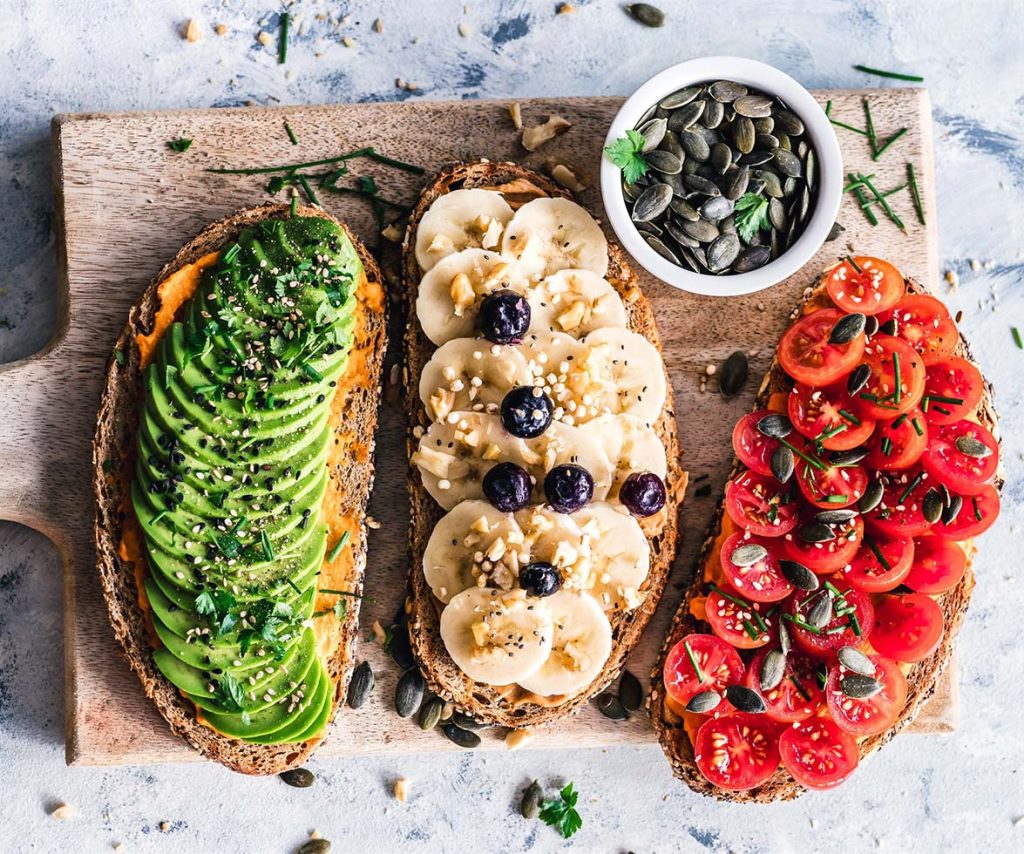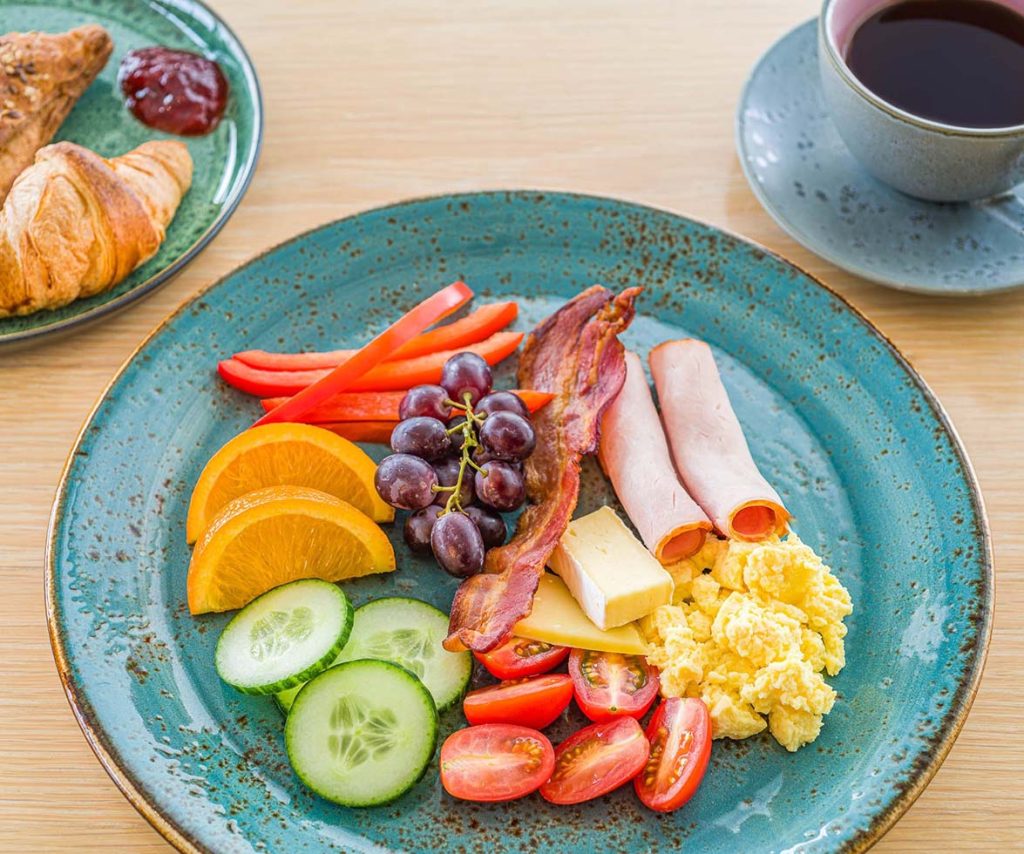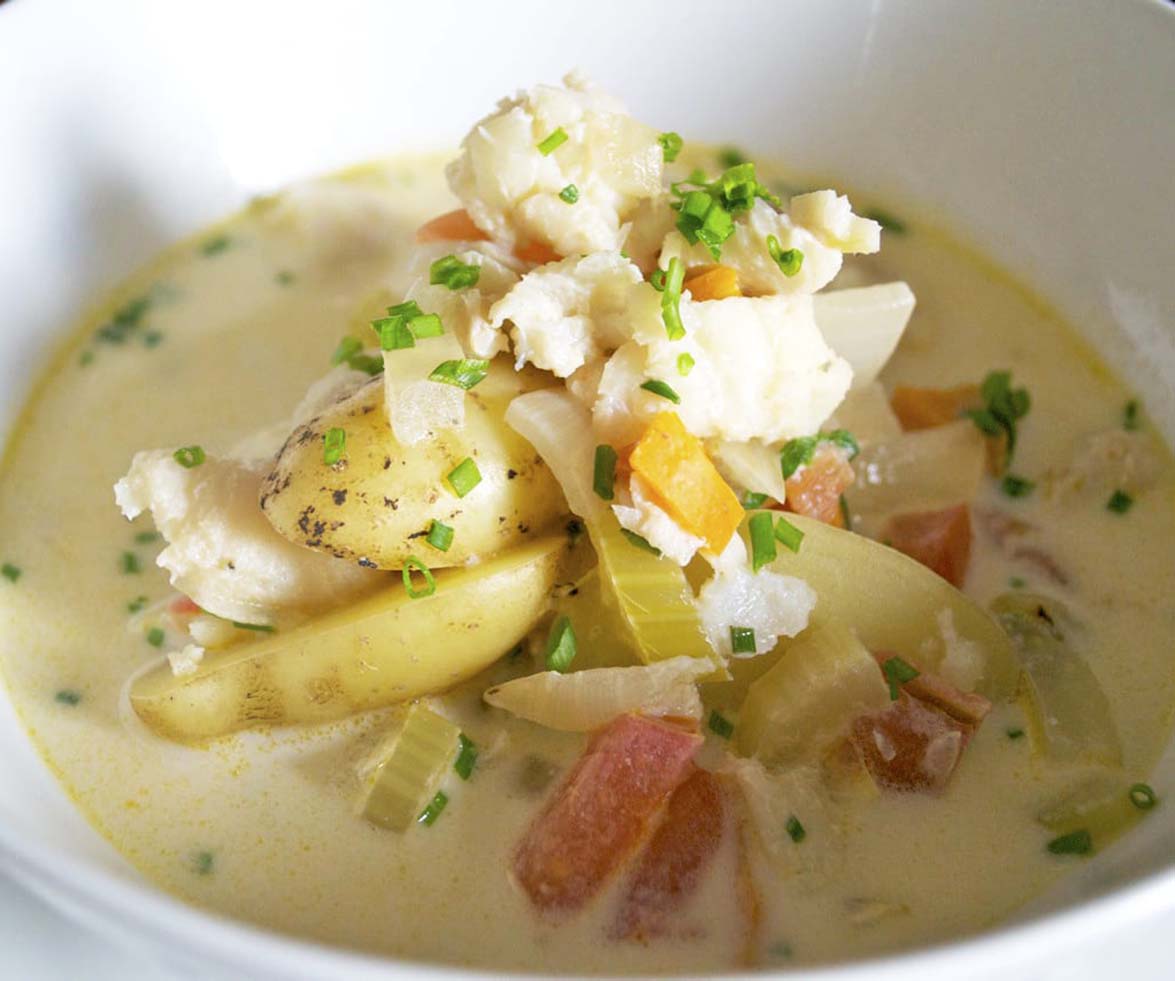What comes to mind when you think about food and drink in Iceland? Fresh fish or, to say the least, ‘unusual’ dishes? On this page, you will read about the food and drink Icelanders regularly consume, the delicacies, and the ingredients that are staples in the Icelandic kitchen.
The Icelandic cuisine mainly consists of local ingredients. In the past, Iceland was truly a remote country. The Icelanders had to make do with what they had. Everything that initially seemed inedible, such as sheep’s eyes, turned out to be quite tasty when prepared and served. Nowadays, it is actually no longer necessary to eat these dishes. However, for Icelanders, tradition is very important, and that is why they still lovingly eat sheep’s eyes, boiled sheep’s head, and ram’s testicles.
Doesn’t this make your mouth water? No worries: the Icelandic cuisine offers something for everyone.
Icelandic Food: Fish Dishes
Fish is one of the main ingredients of Icelandic cuisine. The most famous fish dish is harðfiskur: dried haddock. This dish is served with butter. In most hotels, lodges, and restaurants, you will find salmon trout or cod on the menu. This fish is almost always sourced from local fish farms – or even directly from the sea or rivers.
Eating shark, ray, and whale meat in Iceland is discouraged by Icelandic authorities and nature organizations. Therefore, we recommend avoiding these dishes. In the following paragraph, you can read more about shark, ray, and whale meat and how to recognize it on the menu.
A well-known Icelandic delicacy is hákarl: fermented shark. Traditionally, this meat came from the skin of Greenland sharks. These sharks live deep on the ocean floor and can live up to 300 years. Today, hunting these sharks is no longer actively carried out. Most shark dishes on Icelandic menus come from sharks caught as bycatch. The meat is then buried under a few stones to remove toxins and let the meat ‘mature.’ After a few months, the meat is hung on wooden beams to dry. After six months, the meat is ‘suitable’ for consumption. Hákarl is an expensive dish and is consumed in small portions with brennivín: a strong alcoholic drink made from potatoes.
Another Icelandic fish dish is kæst skata: ray meat. This meat, like hákarl, is first aged under stones and then hung to dry on wooden beams. The dish is mainly eaten on December 23 and July 20. The meat is finished with boiled potatoes, turnips, and melted sheep fat. In various Icelandic restaurants, mainly in traditional villages in the north of the country, whale meat is offered. You can recognize it by the name hrefna. Whale meat is eaten in the form of steak. According to Icelanders, whale meat tastes like beef. In some places, you can eat whale as kebab. For a long time, whaling was banned. Since October 21, 2006, commercial whaling has been partially allowed again. Icelanders mostly hunt minke whales. Almost everything from the whale is consumed, including whale blubber (hvalspik). But beware: Icelandic authorities advise against eating whale, shark, and ray meat.
Icelandic Food: Meat Dishes
During your tour of Iceland, you will probably encounter ‘wild’ horses and sheep regularly. Farmers bring their animals to the edges of the highlands in the spring. They have the space, eat natural ingredients such as herbs, graze on pastures, do not come into contact with pollution, and have a free life for half of the year. Some of these animals are used for dairy products, and another part is slaughtered for meat.
For sheep and lambs, everything is used: from the testicles to the eyes. With the dish svið, a complete sheep’s head is singed and boiled. The blood is turned into blóðmór: sheep’s blood pudding. Furthermore, sheep and lamb meat is roasted, salted, and made into burgers, hotdogs, and ham. A well-known hotdog is the pylsa lamb hotdog. You can buy this hotdog at small food stalls.
In Icelandic cuisine, steak and sausage made from horse meat are also eaten. This meat is called hrossakjöt and has a strong flavor. It contains less fat and fewer calories than beef. Horse meat is salted or smoked. Smoked horse meat sausages are called bjúgu and can also be bought in the supermarket. Want to eat wild meat? In Iceland, they also serve elk and wild reindeer meat, among others, in Hotel Láxá in Myvatn.
Vegetarian Food in Iceland

Eating vegetarian in Iceland is no problem. Besides the traditional fish and meat dishes, most restaurants also offer vegetarian options. In Reykjavik and Akureyri, you will even find restaurants completely focused on vegetarian and/or vegan food. At restaurants belonging to farms in the interior, it is a bit more challenging, but you can discuss asking for meat or fish-free dishes. As a vegetarian, you can also enjoy delicious dairy dishes, such as skyr with rhubarb and berries. In nature, there is also a lot of delicious food growing, such as forest mushrooms, wild thyme, and roots. These ingredients are also part of the standard in Icelandic cuisine. Furthermore, the most delicious Icelandic pestos and tapenades are made with herbs and cheese.
Vegan food is also possible. Icelanders know well how to prepare the tastiest meals with plant-based products. How about mushroom soup with homemade rolls, chickpea burgers with tomato salsa, and quiches of potatoes, parsnips, and carrots. Vegan dishes, however, are not extensively offered in the smaller towns and villages: so ask for them. In all supermarkets in Iceland, you will find many different vegan options. Keep in mind that when traveling around the country, you will cover long distances in a short time and encounter few to no supermarkets. Occasionally, you will find a restaurant or gas station. The chances of them offering something for vegans are slim. Therefore, bring something from home, such as dried fruit, canned beans, or bags of nuts.
Drinks in Iceland
Coffee is the local drink of Iceland. You can drink coffee everywhere you go. In some cafes in Reykjavik and Akureyri, you might even get a second cup of coffee for free. You can get all coffee styles: from espresso to latte macchiato. Do you drink coffee with oat or soy milk? In the larger cities and most hotels, they have that too. The national drink of Iceland is Brennivin. This strong drink contains 37.5% alcohol and is made from potatoes and caraway seeds.
You can get beer and wine everywhere. That was different years ago when there was an alcohol ban in Iceland. The most famous Icelandic beer brands are Viking and Thule. These beer brands are both brewed at the Viking Ölgerð Brewery in Akureyri. They mainly offer pilsners and lagers. Lesser-known but highly appreciated breweries are Skjálfti and Kaldi. Kaldi is brewed at the Beer Spa and can also be tasted there as a traveler.
Breakfast and Lunch in Iceland

Breakfast in Iceland mainly consists of dairy products, cereals, bread, rúgbrauð (rye bread), cheese, meat, and herring. Typical Icelandic dairy products are skyr, a yogurt made from skimmed milk with cereals and berries, and súrmjólk, a low-fat yogurt with brown sugar. Coffee or tea is drunk with breakfast. When they go all out, Icelanders enjoy traditional pancakes with whipped cream and rhubarb jam. The Icelandic lunch is similar to breakfast but just a bit more extensive. Often a soup is served as an extra.
Dinner in Iceland
Dinner is a traditional moment with the family for Icelanders. That is why elaborate cooking is often done during the evening hours. First, soup is served. The soup is followed by a fish or lamb dish. Icelandic dishes mainly consist of fresh ingredients. Fish is caught in the sea around the entire country, meat comes from animals grazing in the wild far from cities, and vegetables are grown both outside and inside greenhouses. The greenhouses are heated in a climate-neutral way, using the natural warmth from geothermal sources.
My Favorite Icelandic Dishes
During my visits to Iceland, I immensely enjoy several dishes. I want to let you know which ones so you can enjoy them too:
– Plokkfiskur: a fish stew made from cooked fish, potatoes, and onions, served with white sauce and rúgbrauð.
– Skyr with muesli and berries: a great way to start the day.
– Rúgbrauð: traditionally baked Icelandic rye bread is always good. Delicious with creamy butter, sour herring, or pâté.
– Hardfiskur: dried haddock, wolf fish, or cod. Super healthy – it’s packed with protein – and easy to take with you. Beware of the smell, as it lingers in your car, room, or suitcase.
– Pylsa: an Icelandic hotdog made from lamb.
– Icelandic herb pestos: taste great with traditional rye bread.
